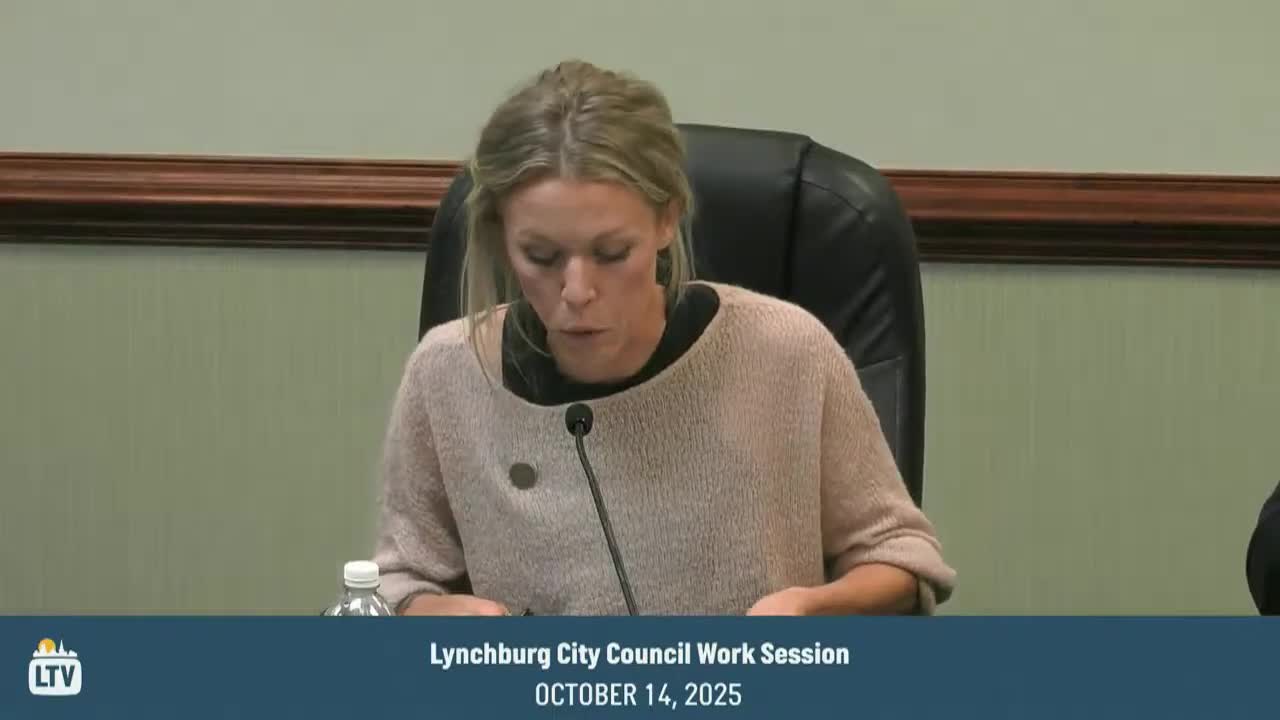Council refers proposed zoning restrictions on abortion clinics to Planning Commission after debate
October 15, 2025 | Lynchburg, Campbell, Virginia
This article was created by AI summarizing key points discussed. AI makes mistakes, so for full details and context, please refer to the video of the full meeting. Please report any errors so we can fix them. Report an error »

The Lynchburg City Council voted unanimously on Oct. 14 to send a proposed zoning amendment to the Planning Commission that would define "abortion clinic" as a distinct land use, require conditional-use permits for clinics in specified base zoning districts, and establish setback and distance standards from sensitive uses including schools, places of worship, libraries and historic or cultural districts.
Council member (sponsor) introduced a draft amendment and legal counsel for a private organization provided a legal overview, saying state statute and Virginia Supreme Court precedent give localities broad zoning authority. The sponsor and other council members said their intent was not to ban clinics citywide but to require local land-use review and limit locations where such facilities could appear without council oversight.
Key elements in the draft discussed by the council included:
- a new, specific definition of "abortion clinic" in the zoning ordinance;
- moving abortion clinics from a use allowed by right in many commercial and institutional districts to a use permitted only by conditional-use permit in specified districts;
- proposed distance limits (as drafted in the initial proposal) from houses of worship, public and private schools (pre-K through high school), public parks, museums and designated historic or cultural districts.
Staff and legal counsel explained the ordinance-creation process: council initiation, referral to the Planning Commission, public hearing(s) and potential modifications before a final council vote. Planning staff said that if council initiates the item, the earliest legal advertisement would be Oct. 23 and the matter could return to council for further action in January if the schedule follows standard review timelines.
Councilors debated legal and policy questions: some members said local zoning authority already permits such regulation and that seeking duplicate statutory authority at the state level might be unnecessary and counterproductive; others emphasized the public-safety, traffic and community-impact rationale for review of such facilities in sensitive locations. Several members asked staff and the city attorney to provide additional analysis as the Planning Commission and public hearings proceed.
The formal action recorded at the end of the session was a motion to suspend the rules and refer the draft ordinance to the Planning Commission; the motion passed unanimously by recorded vote.
Ending: Staff said they will advertise and route the draft to the Planning Commission, gather public input at the commission hearing, and return a revised ordinance to council for a public hearing and final vote.
Council member (sponsor) introduced a draft amendment and legal counsel for a private organization provided a legal overview, saying state statute and Virginia Supreme Court precedent give localities broad zoning authority. The sponsor and other council members said their intent was not to ban clinics citywide but to require local land-use review and limit locations where such facilities could appear without council oversight.
Key elements in the draft discussed by the council included:
- a new, specific definition of "abortion clinic" in the zoning ordinance;
- moving abortion clinics from a use allowed by right in many commercial and institutional districts to a use permitted only by conditional-use permit in specified districts;
- proposed distance limits (as drafted in the initial proposal) from houses of worship, public and private schools (pre-K through high school), public parks, museums and designated historic or cultural districts.
Staff and legal counsel explained the ordinance-creation process: council initiation, referral to the Planning Commission, public hearing(s) and potential modifications before a final council vote. Planning staff said that if council initiates the item, the earliest legal advertisement would be Oct. 23 and the matter could return to council for further action in January if the schedule follows standard review timelines.
Councilors debated legal and policy questions: some members said local zoning authority already permits such regulation and that seeking duplicate statutory authority at the state level might be unnecessary and counterproductive; others emphasized the public-safety, traffic and community-impact rationale for review of such facilities in sensitive locations. Several members asked staff and the city attorney to provide additional analysis as the Planning Commission and public hearings proceed.
The formal action recorded at the end of the session was a motion to suspend the rules and refer the draft ordinance to the Planning Commission; the motion passed unanimously by recorded vote.
Ending: Staff said they will advertise and route the draft to the Planning Commission, gather public input at the commission hearing, and return a revised ordinance to council for a public hearing and final vote.
View full meeting
This article is based on a recent meeting—watch the full video and explore the complete transcript for deeper insights into the discussion.
View full meeting
